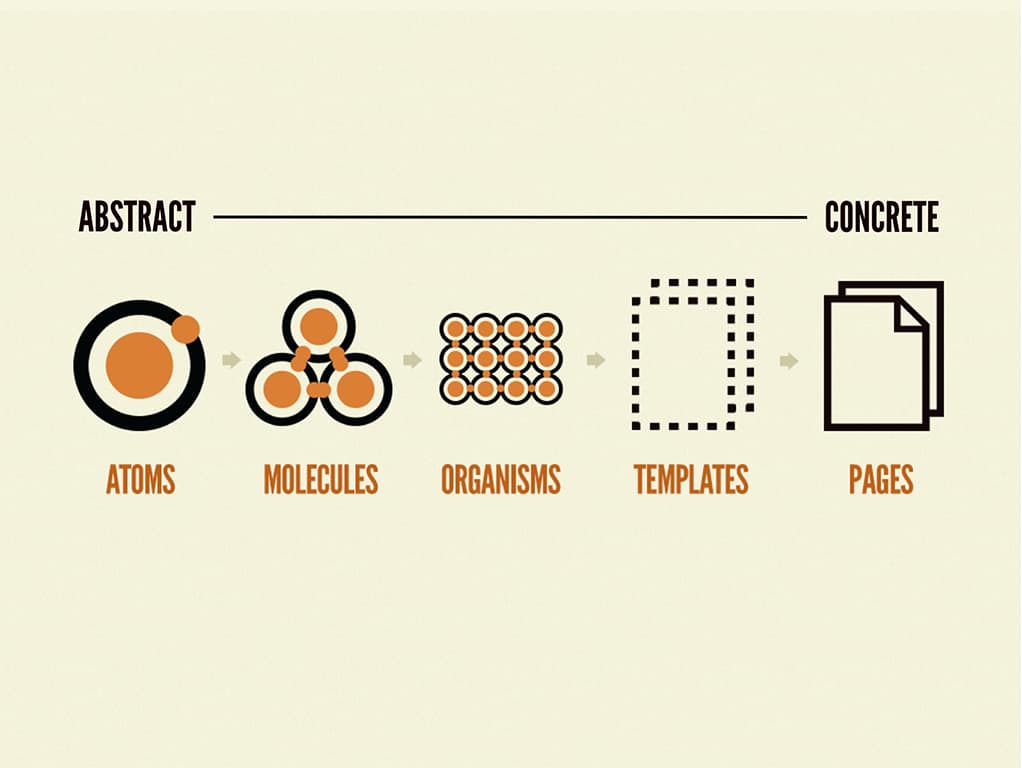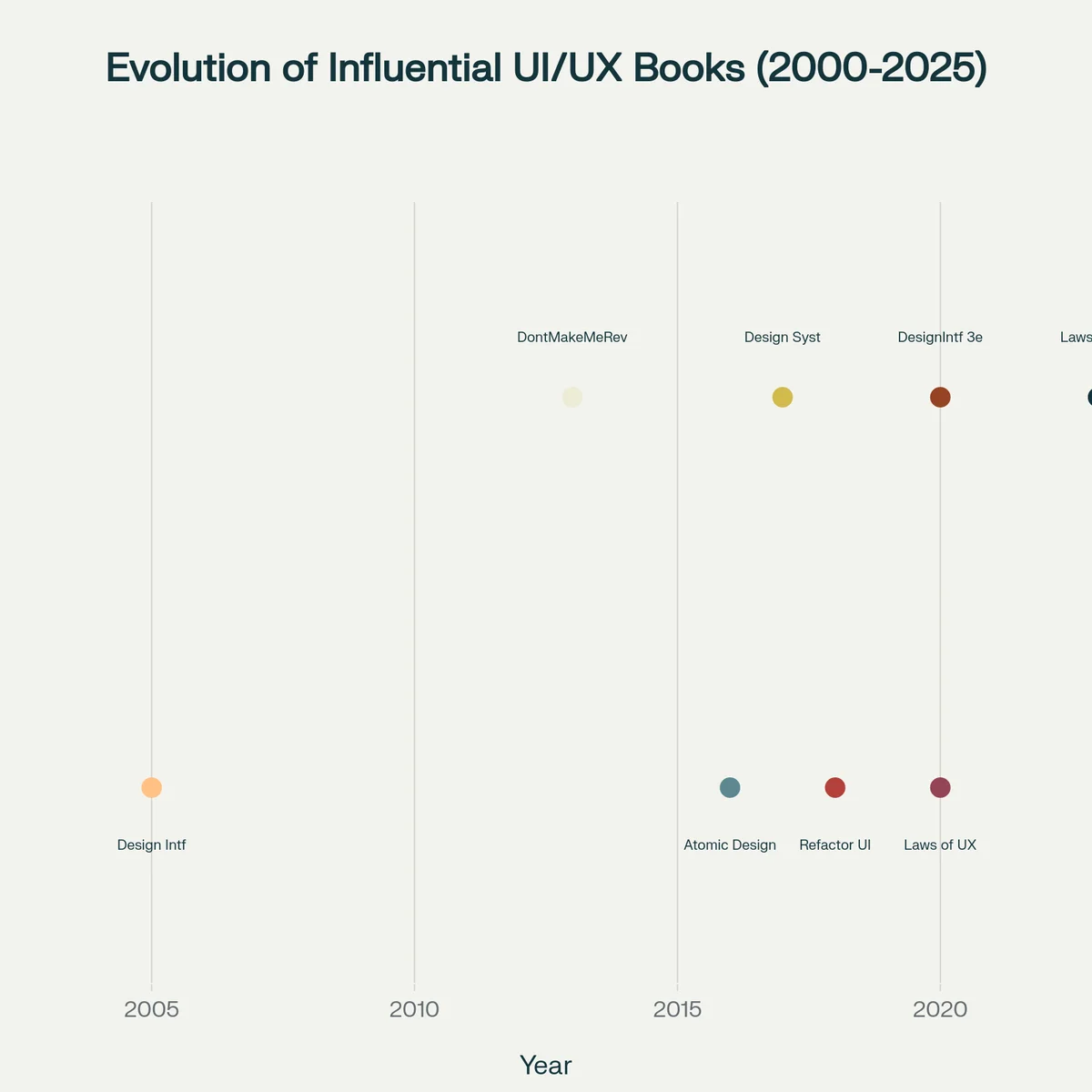Key Insight: Clear information architecture, minimal cognitive load, and consistent design systems remain the foundation of great user experiences – however, the methods for implementing them have evolved from individual screens to token-based ecosystems.
1. The DNA of Modern Usability: "Don't Make Me Think"
Krug's classic from 2000 distills three timeless principles:
- Self-explanatory navigation – Users should recognize where they are and what they can do without thinking.
- Visual hierarchy over text instruction – Guide attention through size, contrast, and position.
- Guerrilla usability testing – rapid prototyping over perfectionism.
These fundamentals appear simple but respond to a psychological fact: every additional second of thinking increases bounce rates.
2. Five Books That Translate Krug's Principles to the Present
2.1 Laws of UX – Jon Yablonski
Yablonski complements Krug's pragmatism with explicit psychological heuristics like Hick's Law or Jakob's Law and discusses their ethical pitfalls. The book provides a framework for how teams can make mental models measurable.
2.2 Refactoring UI – Adam Wathan & Steve Schoger
Instead of theory, Refactoring UI offers code-adjacent tactics: gray layouts before color schemes, reduced border usage, and scalable typography scales – specifically for developers without design education.
2.3 Atomic Design – Brad Frost
Frost breaks down interfaces into atoms, molecules, organisms, templates, and pages. This hierarchical thinking enables modular component libraries and automated testing.

Atomic Design methodology showing the progression from abstract atoms to concrete pages in UI design.
2.4 Design Systems – Alla Kholmatova
Kholmatova focuses less on pattern lists than on cultural mechanisms: purpose-driven principles, functional and perceptual patterns, and living pattern libraries.
2.5 Designing Interfaces (3rd Edition) – Jenifer Tidwell
Tidwell continues to deliver the most comprehensive pattern encyclopedia – now updated for mobile gestures, voice outputs, and AR contexts.
3. From Book to Practice: Trends in 21st-Century Development
3.1 Design Tokens as Single Source of Truth
84% of teams in 2025 use tokens to synchronize colors, spacing, and typography across platforms. Tools like Figma Variables accelerate rollouts, while Style Dictionary conventions ensure consistent naming.
3.2 WCAG 2.2 and Inclusive Design
Nine new success criteria (e.g., "Focus Not Obscured" and "Target Size 24px") elevate keyboard focus and authentication without cognitive tests to Level AA. Inclusive Design becomes a legal minimum rather than a nice-to-have.
3.3 Voice and AI Interfaces
Voice User Interfaces (VUI) require linear rather than visual dialog flows; principles like clear confirmation and error recovery become essential reading for content designers. AI-powered layout generators handle repetitive UI patterns while designers focus on ethics and storytelling.
4. Which Book Fits Which Problem?
| Scenario | Entry Recommendation | Why? | | :-- | :-- | :-- | | New team, no UX expertise | Don't Make Me Think | Quick heuristics & low-budget tests | | Feature refactor by developers | Refactoring UI | Concrete, immediately applicable code patterns | | Scaling multiple products | Design Systems + Atomic Design | Shared language & modular components | | Psychological behavior steering | Laws of UX | Evidence-based principles & ethics | | Pattern research for special cases | Designing Interfaces 3e | 100+ UI patterns incl. AR/VR extensions |
5. Conclusion
Steve Krug's call to not make users think remains the ground rule of good interfaces. Modern works extend it along three axes:
- Operationalize psychology (Laws of UX)
- Make craftsmanship production-ready (Refactoring UI, Atomic Design)
- Enable organizations (Design Systems)
Starting with Krug and then strategically using the books presented here gives you mastery of both micro-usability and systematic scaling – preparing you for Voice, AI, and WCAG 2.2.
6. The Evolution Timeline
The progression from usability basics to systematic scalability shows how the field has matured:

Timeline of influential UI/UX publications showing the evolution from usability basics to systematic design approaches.
- 2000s: Individual page optimization (Krug's era)
- 2010s: Pattern libraries and responsive design
- 2020s: Component systems and design tokens
- 2025+: AI-assisted design and inclusive-by-default interfaces
The fundamental principle of reducing cognitive load remains constant, but our tools and methods for achieving it have become exponentially more sophisticated and organizationally scalable.